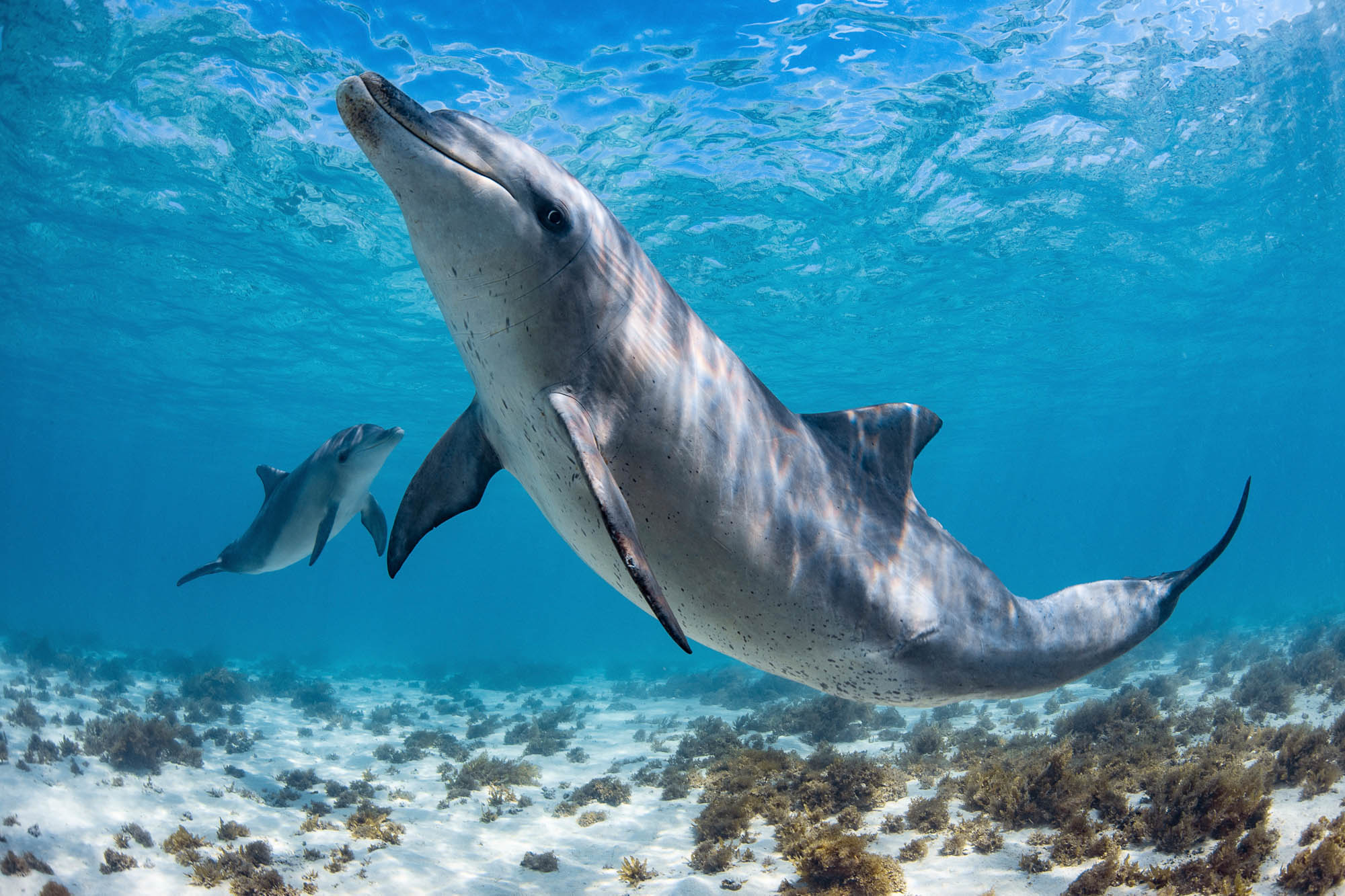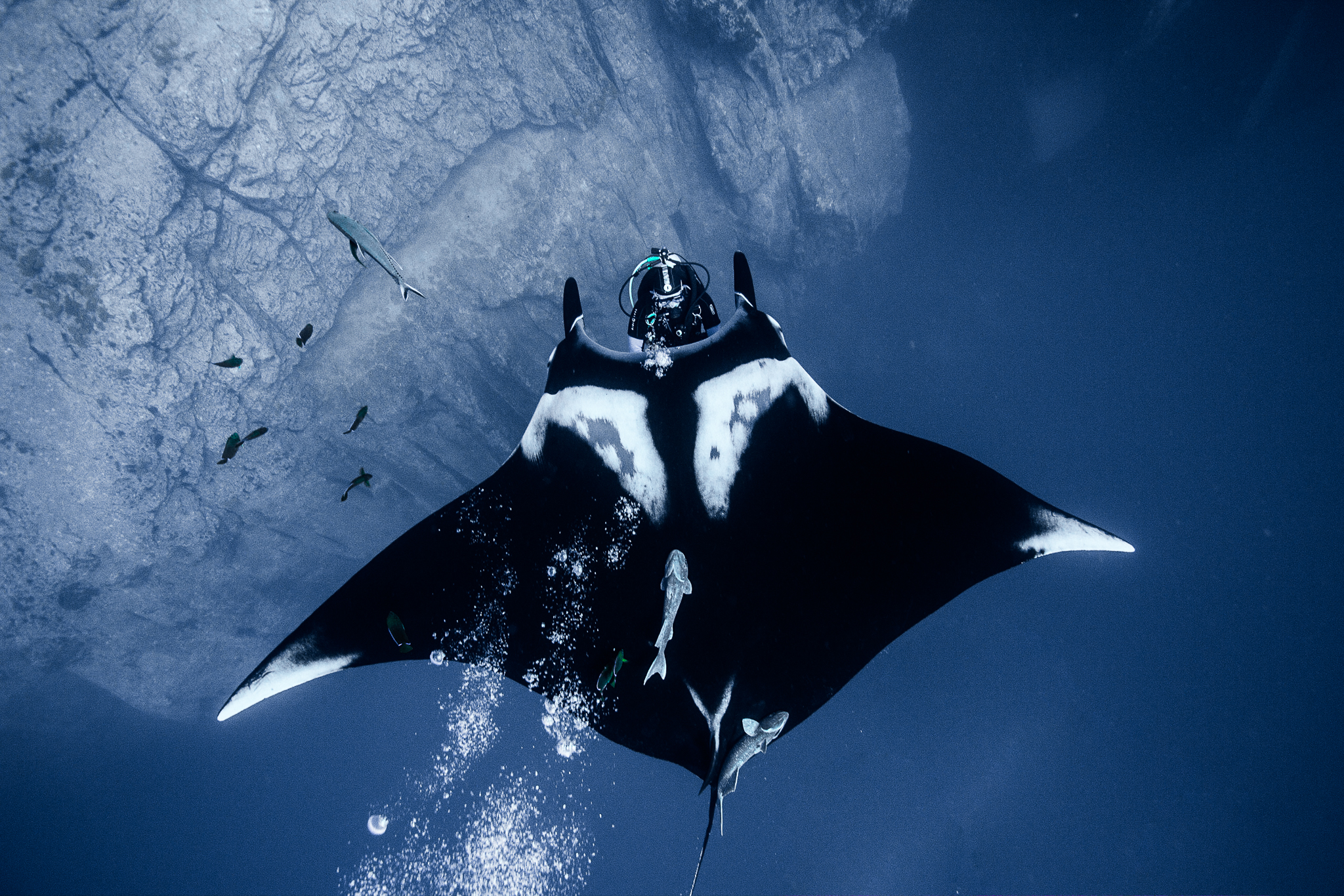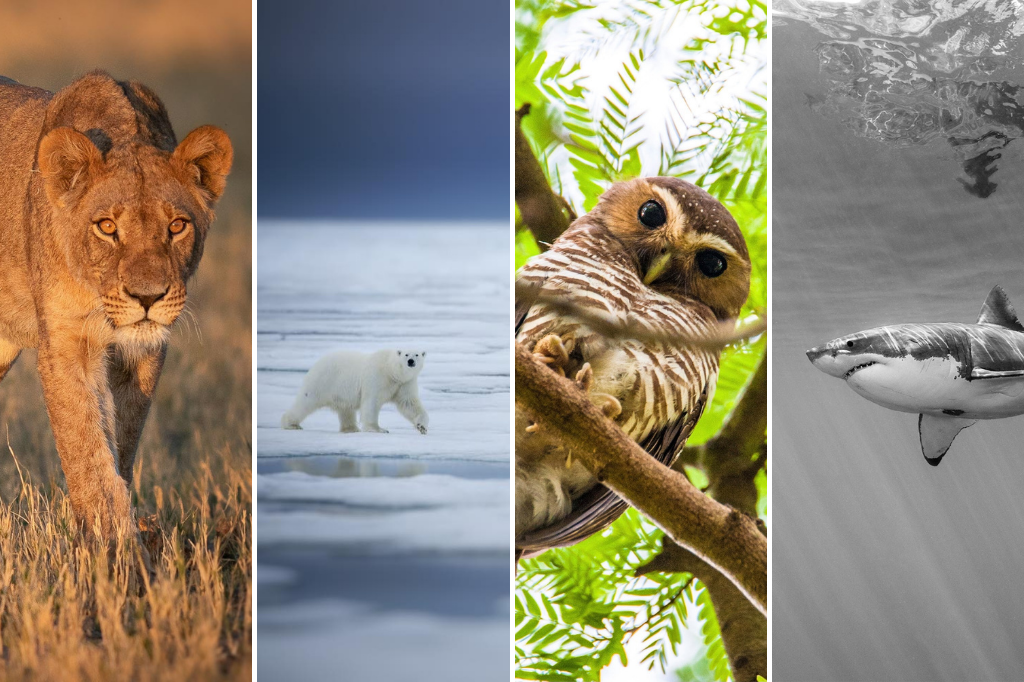Brooke Pyke is an accomplished underwater photographer whose passion for the ocean has taken her on many incredible adventures in the oceans around the globe. With a keen eye for detail and a deep love for marine life, Brooke’s work captures the stunning beauty and mystery of the underwater world, producing mesmerising and awe-inspiring photographs. Whether she’s swimming with sharks or capturing the beauty of a coral reef, Brooke’s photographs are a testament to the remarkable beauty and fragility of our oceans.
Please tell us a little bit about yourself.
My name is Brooke Pyke, and I am a wildlife photographer. I specialise in photographing large marine animals such as whale sharks, mantas and humpback whales. I am currently based in Exmouth on the Ningaloo Reef in Western Australia, but I grew up in a small town in Victoria. I’ve always loved the ocean, and during my childhood, I spent a lot of time in and around the water. As many fellow Australians can probably relate, the ocean is one of our greatest playgrounds here, and many of us have a close relation to it from a young age.

Where did your journey into underwater photography begin?
If you had asked me years ago where I thought I’d end up as an adult, becoming an underwater photographer on the Ningaloo Reef in Western Australia would have surprised me. After finishing school, I applied to study photography but wasn’t accepted into the course. I then studied Graphic Design but soon discovered a love for diving while on holiday in Thailand. I abandoned my career as a designer and moved abroad to train to become a dive instructor. The underwater world truly fascinated me. Being below the surface gave me a feeling of freedom and calmness. I knew this was where I wanted to be, so I spent several years in Southeast Asia working as a dive instructor in Southeast Asia. It wasn’t long until I picked up an underwater camera, and then this is where it all kicked off.
I bought my first underwater camera in 2014 and began teaching myself the basics of underwater photography. I spent hours in the water, learning on the go through experimentation. I am entirely self-taught. Dreaming of turning my newfound passion into a career, I sought out locations where underwater photography was a possible full-time job. This landed me in Exmouth on the Ningaloo reef, where I now live and work.
The reef here is teeming with life, and we are so lucky to have a healthy population of large marine animals such as manta rays, whale sharks, migrating humpbacks and many other pelagic species. Ningaloo is just one of those places that give you a sense of magic, and it never stops surprising me and showing me new things. It really is the dream location for any underwater photographer or nature lover.
What do you love the most about underwater photography?
For me, underwater photography is not only a career or a passion but a way of being. Spending so much time in the water, near the coast and immersed in nature constantly fills me up and keeps me going. I can’t imagine doing anything else; when I’m at work, I can almost forget what’s going on in the world outside. Photographing all the beautiful animals I swim with nearly every day is so relaxing and calming, as well as being the perfect creative outlet, not to mention it’s my full-time job. I do have to pinch myself a lot!
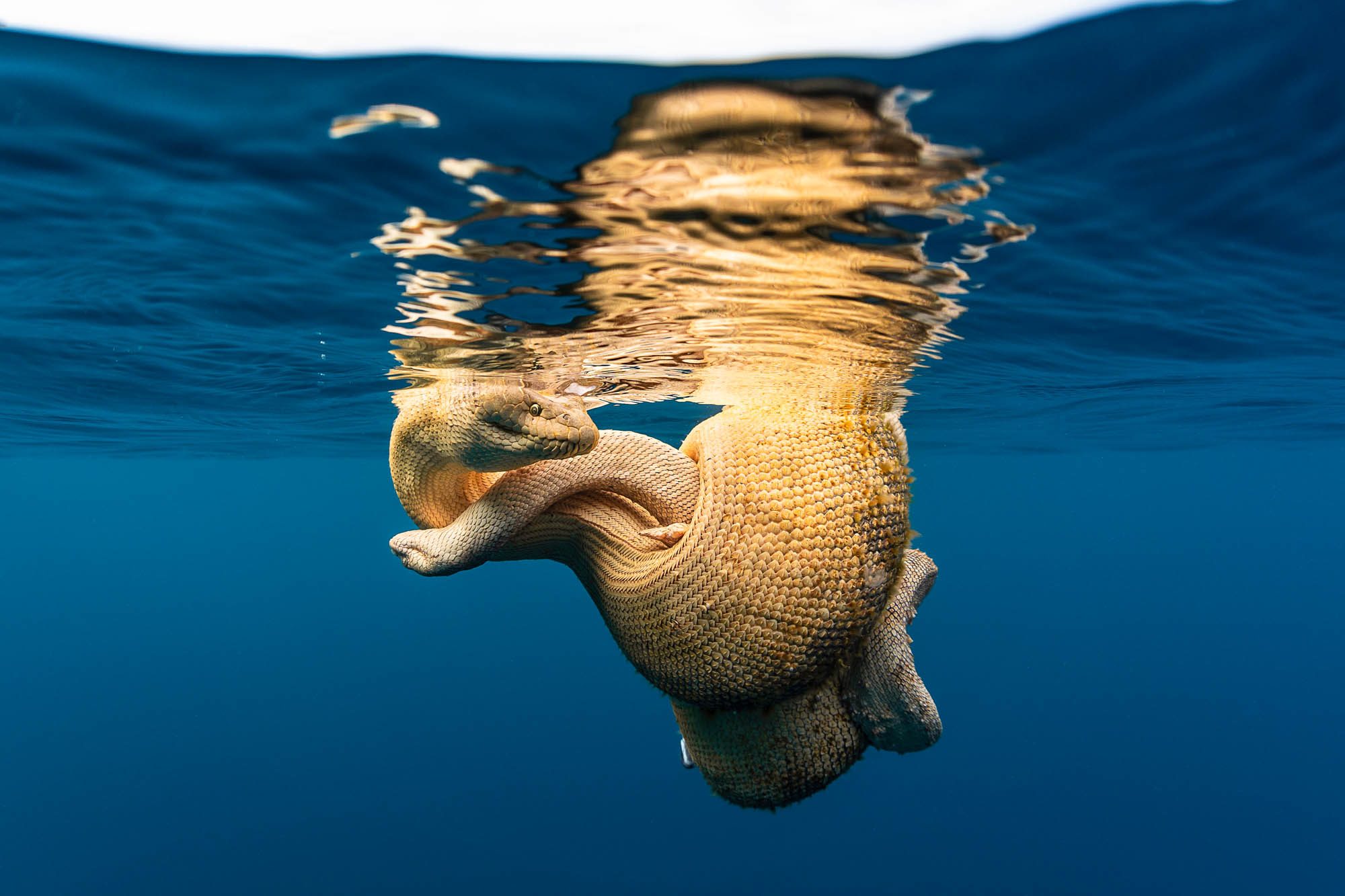
What is the experience like photographing these beautiful marine animals?
It is very humbling and makes me feel so happy to be alive to see them. It is especially wonderful when the animals let you into their world without me or them feeling threatened in any way. There are so many days when I am swimming alongside a whale shark (and this is a typical day at the office for me) when I think how lucky I am to be in the presence of such an amazingly large animal that survived millions of years of evolution, in the deep ocean and I feel totally ok with that! I just hope that my photos can do these animals the justice they deserve.
Did it take you a while to get comfortable with these animals, or was it something that came naturally to you?
I don’t remember ever having any fear of them. I definitely have a lot of respect for them as they’re all wild animals, and I am entering their element. But being around them so often, you learn pretty quickly to read body language and know when you’re not welcome or when you need to give them more distance. Being comfortable around them definitely came naturally to me, and I haven’t had any bad experiences in the ocean where I felt uncomfortable. But I am a bit of a thrill seeker and always on the hunt for adventure!
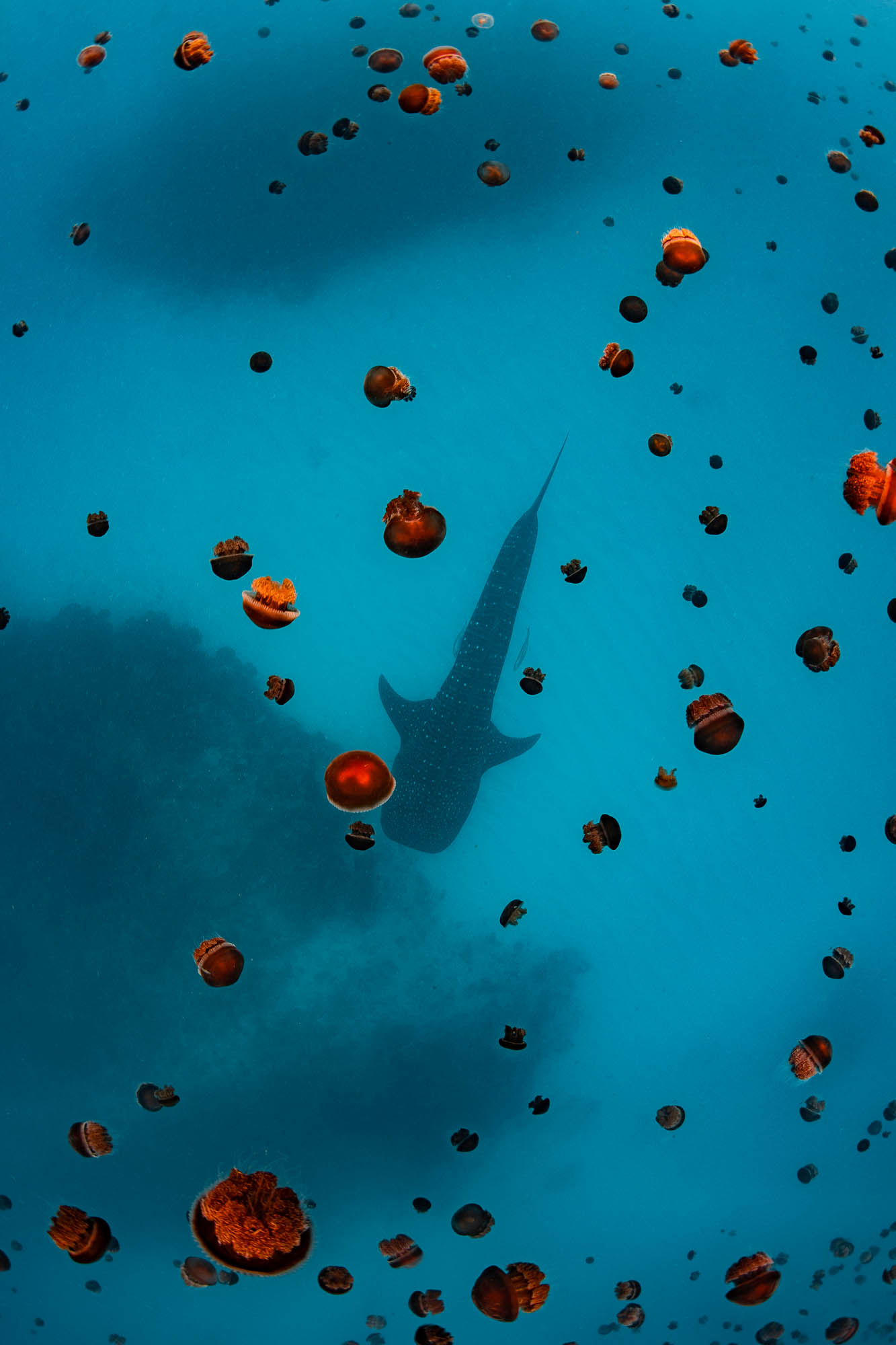
Where are some of your favourite places to shoot?
The Ningaloo is definitely my favourite so far due to the accessibility and abundance of large marine megafauna. Indonesia comes pretty close to the top as well. I love the reefs in Raja Ampat. The colours and diversity blow me away every time.
How would you describe your photographic style?
I would say that I aim for my style to be realistic but also a creative and artistic representation of an animal’s form and character, highlighting their unique attributes where I can.
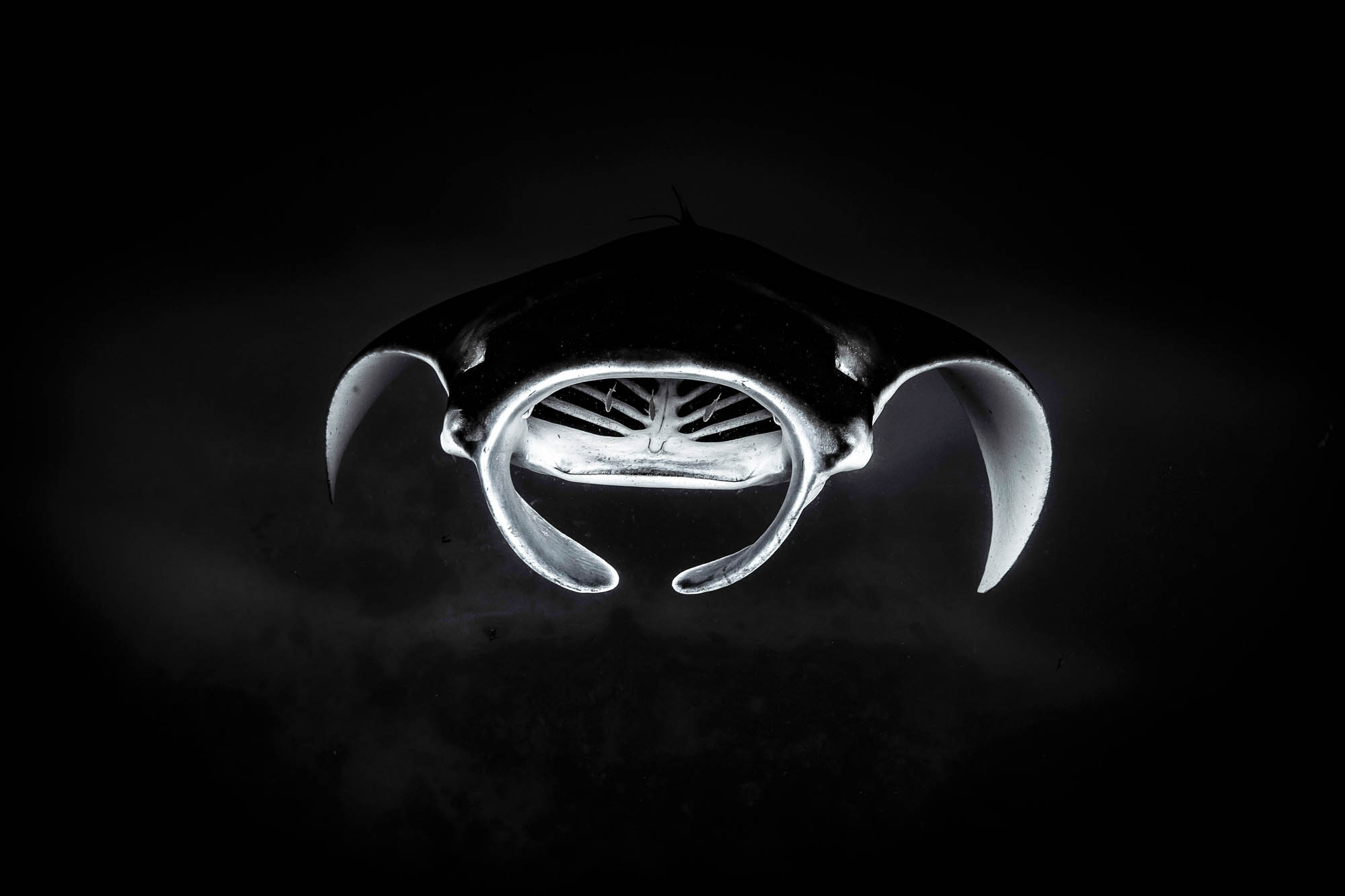
How do you go about setting up the perfect shot?
Being able to act quickly and be prepared is very important when setting up a shot for wild animals. Before taking the shot, I ensure all my settings are correct and ready. I then wait for the animals to get into the best position for the photo. Predicting where it will move next is a big part of it, as there is no use in having a photo of an animal swimming away from the lens.
What are some elements that you need to create the perfect shot?
For underwater photography, good weather and visibility are paramount. To create the perfect photo, you need clear blue water and sunshine. Due to the way, water absorbs light and colour, photographing on a cloudy day can create a lot of challenges and will push your camera and photography skills to the max.
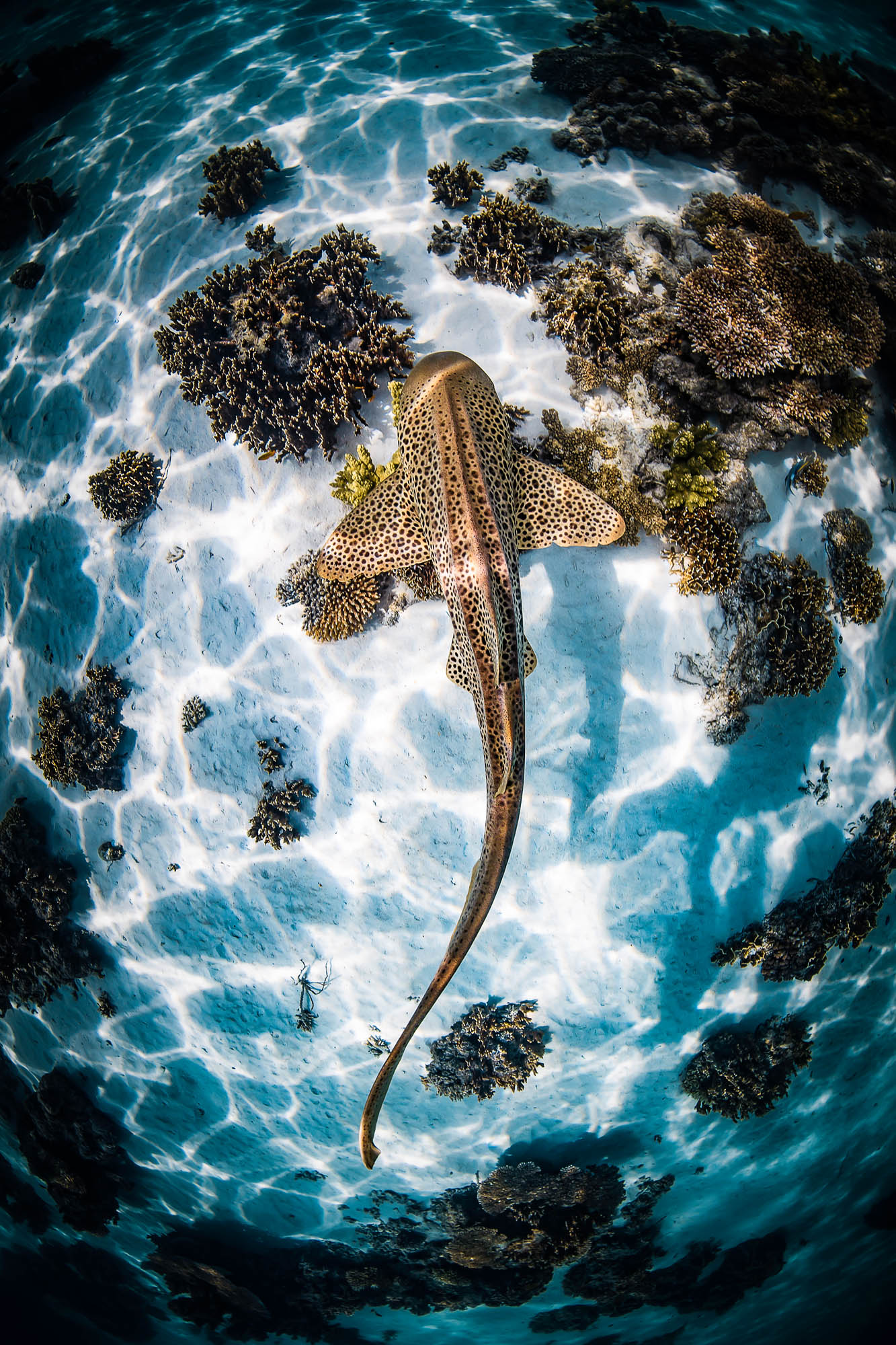
What are some of the most challenging things about underwater photography?
Getting close enough to the animals for a good photo is very challenging. Especially with sharks, surprisingly, many of them are very spooked by people despite what many would think. Finding the right animal that will let you into its space involves a lot of patience and time.
What are your top five underwater photography tips that you would give someone interested in exploring the genre?
- Buy a decent setup, not just a basic point-and-shoot camera. Invest in something you can grow your skills with that has full manual controls.
- Gain experience and strengthen your dive skills to get comfortable in the water before taking your camera on dives with you.
- Spend as much time in the field amongst marine life as you can to gain experience. Learning where certain animals live and how they behave will help you get good shots of them in their environment.
- Take some photography courses to learn the basics. Go on dive trips catering primarily to photographers that will offer good photo opportunities.
- Practise photographing manually and be familiar with your camera. Practise on land as much as you can as well.

Which camera do you shoot with?
I have a Canon R6 with a Canon 8-15mm Fisheye Lens for wide-angle shots. For macro photos, I use a Canon 100mm lens. My underwater housing and lens ports are from Nauticam.
What gear would you recommend for underwater photography?
I get asked this a lot, and it greatly depends on your budget. Underwater photography is not a cheap hobby to take up. For cameras, purchase something that you can control manually as a minimum. If you can afford it, definitely get a full-frame camera. Canon has a great range of cameras to suit low to high budgets as well as having good lens options. For photographing larger animals, as I do, you will need a wide angle or a fisheye lens to get clear and crisp close-ups. Most serious underwater photographers will agree that Nauticam is one of the best brands for housing systems. Their housings are so well made, extremely reliable and easy to use and set up. They are designed to last and made with quality parts and materials. I cannot say it enough, don’t purchase low-quality housing. You may end up losing your camera due to flooding.

